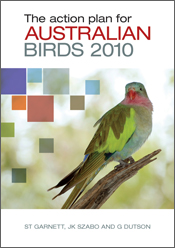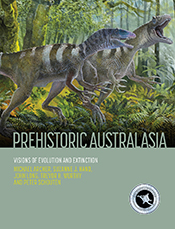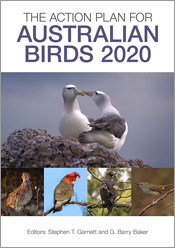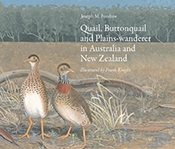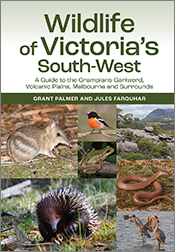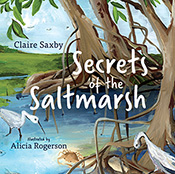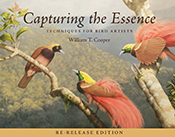The Action Plan for Australian Birds 2010

By: Stephen Garnett, Judit Szabo, Guy Dutson
The most authoritative account yet of the status of Australia's birds.
The Action Plan for Australian Birds 2010 is the third in a series of action plans that have been produced at the start of each decade. The book analyses the International Union for Conservation of Nature (IUCN) status of all the species and subspecies of Australia's birds, including those of the offshore territories. For each bird the size and trend in their population and distribution has been analysed using the latest iteration of IUCN Red List Criteria to determine their risk of extinction. + Full description
The book also provides an account of all those species and subspecies that are or are likely to be extinct. The result is the most authoritative account yet of the status of Australia's birds.
In this completely revised edition each account covers not only the 2010 status but provides a retrospective assessment of the status in 1990 and 2000 based on current knowledge, taxonomic revisions and changes to the IUCN criteria, and then reasons why the status of some taxa has changed over the last two decades. Maps have been created specifically for the Action Plan based on vetted data drawn from the records of Birds Australia, its members and its partners in many government departments.
This is not a book of lost causes. It is a call for action to keep the extraordinary biodiversity we have inherited and pass the legacy to our children.
2012 Whitley Award Commendation for Zoological Resource.
- Short descriptionNews
This title is no longer available in print, but can still be purchased as an eBook.
You may also be interested in The Action Plan for Australian Birds 2020 (published December 2021).
Reviews
"This book is an essential resource for anyone concerned with bird conservation in Australia. It is also of value to bird enthusiasts who want to know more about the plight of Australia’s most precious birds. Outside Australia and beyond birds, this book offers a user-friendly template for the collective action plans of any taxa in any country or region of our world."
Toby Galligan, Biological Conservation, Vol 159 (52), 2013
"Garnett, Szabo and Dutson have done a good job of bringing together a large body of expertise, from diverse sources, which is interpretable by all. For those who are interested in Australia’s unique avian fauna and care about their plight, it’s well worth the read."
James Brazill-Boast, Corella, 2012, 36 (3) pp. 78
"This book is a harsh reminder that we are losing the biodiversity battle, but also provides hope – we can make a difference but we need to act now by arming ourselves with the facts and raising awareness."
Tim Holmes, Wildlife Australia Magazine, Autumn 2012, pp. 43
"The action plans are very well laid out, being clear and logical, and containing a substantial amount of information that is communicated very concisely. This is definitely a book aimed at Australian conservation practitioners and policy makers, and the synthesis it provides will be invaluable to these audiences."
Anne Goodenough, Bulletin of the British Ecological Society, 43 (2), 2012
"In the modern age of environmental assault on all fronts, this book should be just as much a part of every birder’s library as field-guides and other bird books, if only so birders know where the future of their pursuit lies, and how they could help to shape that future."
Stephen Debus, Australian Field Ornithology (2012) 29, pp. 109–110
"This book is a very well-crafted portal to bird conservation in Australia. Clearly, it will be of great value to those working in that region. But anyone interested in bird conservation more generally might want to pick this up. I was somewhat surprised to find myself reading more and more of the book, to compare ecologies, threats, and solutions that I’m familiar with in the Western Hemisphere to what’s going on in Australia."
Terrell D. Rich, The Auk, 129 (2) pp. 362-363, 2012
"The new book, published in September 2011, analyses the threatened status of species and subspecies of Australia's birds, including those of the offshore territories, and covers non-breeding visitors. The book is nicely printed and seems reasonably sturdy as a paperback for desk-consultation over the next decade."
John Cooper, ACAP website, 9 March 2012
"This report has tackled changes in the conservation paradigm by taking a more synthetic approach to the state of the birds across the entire landscape, outlining how declines can be turned around... this report should provide a benchmark for any future synthesis on the state of birds in any given region. Its valuable contribution to the conservation of Australia’s avifauna is a credit to the authors."
Damien Farine, IBIS Vol 154, Issue 2, April 2012
"I was particularly impressed by the indication of the degree of reliability in the IUCN Red List assessment data, since uncertainty is a core feature in assessments involving observations of highly mobile organisms over time and space… As a reference tool, the book represents good value for money, but apart from this I would recommend it to anybody with more than a passing interest in the conservation of Australian birds."
F. Dane Panetta, The Sunbird, 2012
"Garnett and his colleagues have assembled a large amount of information on the status of Australia’s
birds. It makes for sobering reading, but it is important that we have these periodic assessments... Every conservation biologist should be familiar with the content and conclusions of the 2010 Action
Plan. As Graeme Hamilton says in his Foreword, “...this book describes a tragedy.” Unless we know what that tragedy is and its magnitude we cannot take effective action. The book describes more than
a tragedy; it gives direction to the future and identifies gaps in our knowledge that conservation biologists should be working hard to fill. If the tragedy becomes a disaster, it will only be because we failed to take action. Garnett, Szabo, and Dutson have informed us of the actions we need to implement, now it is up to us."
Harry F. Recher, Pacific Conservation Biology, p. 215, 2013
Details
ePDF | September 2011ISBN: 9780643103696
Publisher: CSIRO Publishing
Available from eRetailers
ePUB | September 2011
ISBN: 9780643103702
Publisher: CSIRO Publishing
Available from eRetailers
Features
- Readily accessible status information with reasons for listing
- Synopsis of principal features that influence listing
- List of actions needed for conservation
- Includes specially commissioned distribution maps
Contents
ForewordSummary
About the authors
Acknowledgements
Introduction
The IUCN Red List Status of Extinct, Threatened and Near Threatened Australian bird taxa
Taxa Profiles
Appendix 1: Distribution of Threatened and Near Threatened birds in Australia
Appendix 2: Taxa listed in the Action Plan for Australian Birds 2000 and omitted from this volume
Index of birds and threats
View the table of contents.
Authors
Stephen Garnett has been studying Australian birds since 1974. During the 1980s he worked on the Handbook of Australian, Antarctic and New Zealand Birds and in 1990, with Joost Brouwer, he drafted the first review of Australia’s threatened bird species. He wrote the first Action Plan for Australian Birds in 1992 and the second Action Plan, in association with Gabriel Crowley, in 2000. He has studied and written about many threatened Australian bird species, most notably the Golden-shouldered Parrot and the Kangaroo Island Glossy Black-Cockatoo, and helped bring the idea of Important Bird Areas to Australia. He also works on natural-resource based livelihoods in northern Australia and South-East Asia. He is a research professor at Charles Darwin University in Darwin.Judit Szabo is a research fellow at Charles Darwin University working on Australian threatened birds. She has studied the effects of pesticides used in locust control on Australian birds. During the five years of field work and data analysis she became interested in issues with data collection and study design, which led to her work on optimal monitoring, bias associated with bird survey data, and using volunteer-collected data to detect trends in bird populations.
Guy Dutson is an independent consultant who has been researching threatened Australasian birds since rediscovering the Superb Pitta in PNG in 1990. He developed BirdLife International’s Pacific program, managing projects across the Pacific islands. Guy moved to Australia in 2006 to develop the Birds Australia–Rio Tinto Important Bird Areas program, and identified all Australian sites of global bird conservation importance. Guy has also worked with bird tourism in the Northern Territory and leads birdwatching tours across the country and globally.

